Last week 9000+ tech enthusiasts descended on Fira Gran Via, Barcelona, for VMware Explore 2023. VMware’s flagship annual event started out in 2004, running under the hugely popular VMworld banner until 2021. In 2022 VMworld transitioned to VMware Explore, demonstrating the companies journey to a mutli-cloud and application focus.
This year, VMware Explore 2023 ran through 6-9 November, with over 750 sessions, and over 60 sponsors and exhibitors. Amongst the breakout sessions and the parties customer appreciation events, I’ve pulled together all the key announcements, along with insights into the healthcare showcases.
Be sure to visit the VMware Explore 2023 Video Library where you’ll find over 700 sessions from Barcelona, available on-demand. You can also use the GitHub page, compiled by William Lam, of VMware Explore 2023 Breakout Session URLs. Expect to hear how VMware is leading the way in cloud-smart, bringing the power of private AI to mainstream enterprises, and continuing to deliver breakthrough innovation.

Day 0
The Monday at VMware Explore is typically for industry and partner sessions. There’s a great buzz as people are arriving, checking in, and building anticipation for the general session the following day.
First up was healthcare industry session INDT1725BCN, Teleradiology Workshop: Ensuring Dependable Workflows for Radiologists, opened by Jens Koegler, VMware Healthcare Industry Director, with an opening keynote from Martin Curley. Martin is Professor of Innovation at Maynooth University and Director of the Digital Health Ecosystem at the Innovation Value Institute. Most recently Martin was CIO and Director of Digital Transformation at Ireland’s Health Service Executive (HSE). We heard about the Stay Left, Shift Left 10X strategy, which aims to keep people out of emergency and elective care. By keeping people well and managing chronic conditions from home, the movement of patients is shifted left to a community or home setting. Furthermore, increasing preventative and pro-active healthcare improves the quality of life and care, at the lowest cost. As we look at the continuum of care the cost increases as we shift from preventative, to home care, to community or primary care, to acute care settings.
We then delved into the life of a remote radiologist and their complex IT setup and challenges. We heard how VMware SDWAN improves and prioritises radiologists applications, along with VMware’s ecosystem of integrating technologies for secure remote access. Siemens Healthineers took to the stage to tell us about the increasing demand for imaging services and the shortage of radiologists, along with their virtual cockpit software for remote scanning, enabling radiologists to collaborate anytime from anywhere. The Siemens Healthineers representatives took part in a Q&A panel session on teleradiology, with Yusuf Mangera, Technical Architect at Imperial College Healthcare NHS Trust. The discussion centred around the need for remote radiologists to increase productivity, provide efficient diagnosis, increase retention, and ultimately deliver better patient outcomes. Imperial College Healthcare NHS Trust are tackling the significant shortage of skills by using technology to widen the pool of available radiologists remotely across the UK.


Day 1 General Session
Tuesday and the biggest day of the week, the general session was underway from 9am local time. Here is my take away from the key announcements and my favourite breakout sessions of day 1. With so much to see and do across the hub, the expo, and even a castellers’ human tower, I missed the donut wall! You can find out what else was going on throughout the day in the official VMware Explore 2023 Barcelona Day 1 Recap.
AI, AI, AI, Artificial Intelligence, if you hadn’t heard. Distributed computing and multi-cloud are at the foundation of AI, and we’re about to hear how we can make it easy to adopt AI securely in the enterprise. VMware CEO Raghu Raghuram opened the general session GEN2154BCN, Taking a Cloud-Smart Approach to Harness the Power of Generative AI, in VMware’s 25th year of milestones and accomplishments. Raghu introduced Broadcom CEO Hock Tan, who committed to continued innovation by investing in R&D and the VMware ecosystem, whilst simplifying how customers consume and configure VMware products.
Working in the healthcare industry, it was great to see Siemens Healthineers as the first major customer showcase. Siemens Healthineers are a market leader in CT/MRI scanners and software for analysing the human body, offering AI-driven solutions to support radiologists with the increasing demand for imaging. They use VMware technologies to develop applications on multi-cloud platforms, using Private AI to take learnings from local data back into central algorithms, as opposed to moving data around. The end to end process provides life changing outcomes for patients and speeds up workflows for radiologists.
Next, we were joined by Purnima Padmanabhan, VMware SVP of Cloud Management, to talk about product innovations. Purnima covered the VMware Cloud capabilities, anchored by VMware Cloud Foundation and delivered as software through partners and hyperscalers, along with security add-ons and overlay services to build applications. Some of the major new innovations include:
- VMware Cloud Foundation 5.1 – provides innovation on your platform foundation, with support for generative AI and compute intensive workloads. VCF 5.1 includes 2x GPU capacity to accelerate AI, 4x storage performance boost with vSAN Express Storage Architecture (ESA), and a bill of materials featuring vSphere/vSAN 8.0 U2, NSX 4.1.2.1, and SDDC Manager 5.1.0.0.
- VMware vSAN Max – delivers petabyte scale disaggregated storage, allowing storage to scale independent of compute, but still be managed from the same control plane. There’s also a broader choice of certified VMware vSAN Ready Nodes now available.
- New Developer, Data, and Security Services for Sovereign Clouds – last year, I wrote about VMware Sovereign Cloud; a framework of guiding principles and best practices to deliver cloud services that adhere to the data sovereignty requirements of a specific jurisdiction. A sovereign cloud seeks to augment existing platforms and regulations, with a specific focus on putting the customer in complete control of their data. Today VMware Sovereign Cloud is a powerful, interconnected, and global ecosystem of 57 cloud providers in 33 different countries. This is a super relevant topic for the NHS, as we know the overwhelming majority of UK citizens believe it is important their data does not leave UK shores. VMware Sovereign Cloud is about more than just data locality, but also regulatory and jurisdictional control. As well as security enhancements, such as Bring Your Own Keys (BYOK) and Bring Your Own Key Management Systems (BYO-KMS), a range of further data and developer services have been added to VMware Sovereign Cloud for more agility, better resiliency and faster innovation. You can see the full list here.
- VMware Live Recovery – VMware announced a new solution that will provide protection for ransomware and disaster recovery across VMware Cloud in one unified console, allowing customers to take advantage of unified protection, secure cyber recovery, and simplified consumption. The functionality in VMware Site Recovery Manager and VMware Cloud Disaster Recovery with Ransomware Recovery, is now available in a flexible adoption model from a single console.
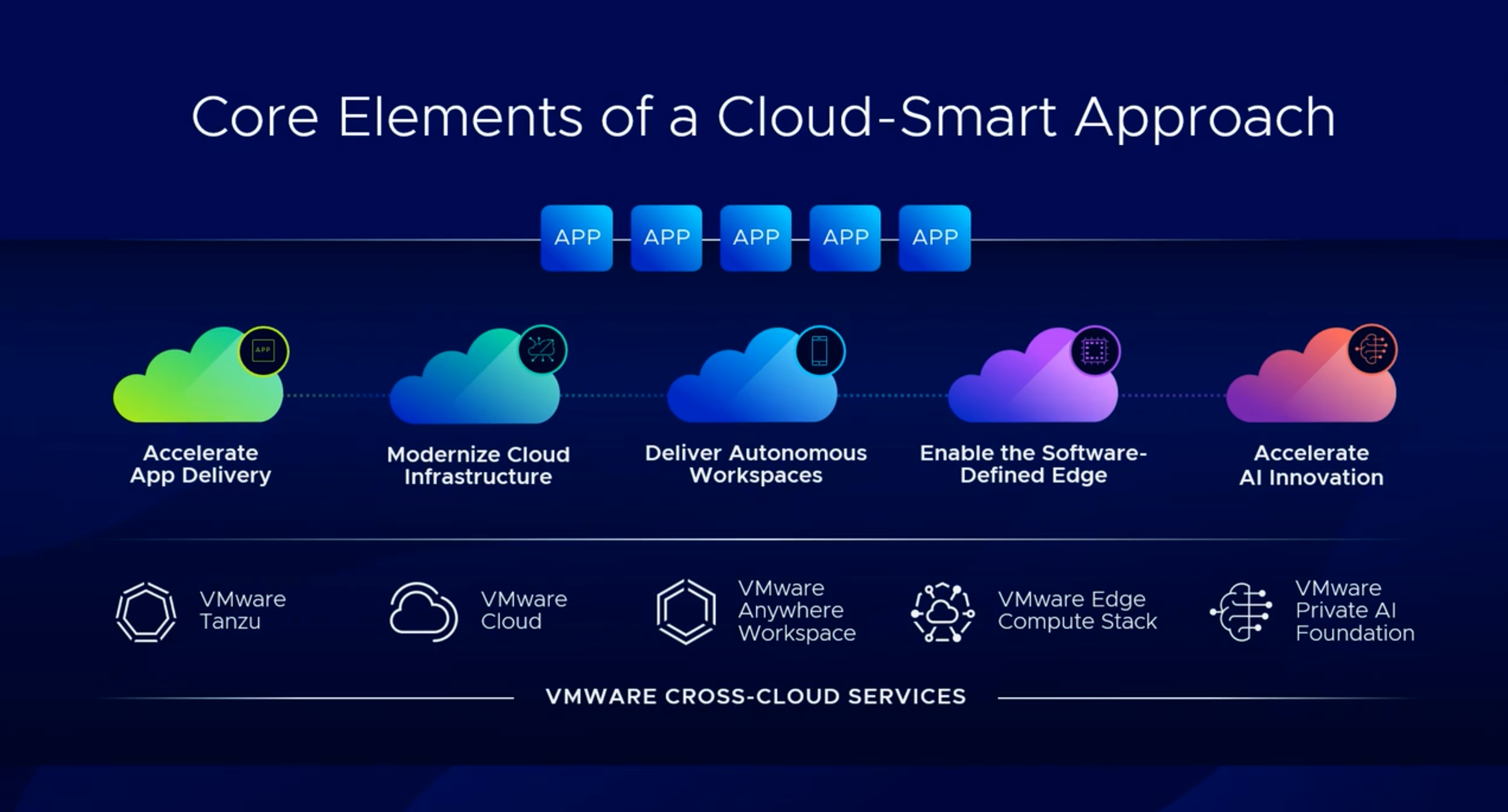

Moving on and Chris Wolf, VP VMware AI Labs, took to the stage to discuss all things generative AI. At VMware Explore Las Vegas, VMware announced Private AI; an architectural approach that balances the business gains from AI with the privacy and compliance needs of the organisation. The key partnership was VMware Private AI Foundation with Nvidia and a VMware Private AI Open Ecosystem. A Reference Architecture for VMware Private AI was accompanied at VMware Explore Barcelona by Starter Packs for VMware Private AI.
Private AI Gains Momentum at VMware Explore Barcelona contains all the Private AI keynote announcements, also summarised below. The AI use case with Siemens Healthineers earlier in the general session is outlined fully in the article AI’s Healthcare Revolution Draws Closer with Multi-Cloud.
- Accelerating Data-Driven Innovation with Next Generation VMware Data Services Manager – the new VMware Data Services Manager will ensure best-in-class management for a wide range of data services, not just databases, as a natively integrated experience for VMware Cloud Foundation customers. MinIO Object Store will be the first third-party object storage natively integrated with VMware Cloud Foundation through Data Services Manager. MinIO is a highly performant and resilient object store and ideal solution for data lake and large-scale AI/ML use cases.
- VMware and Google Cloud Announce Database Solution for Traditional and Generative AI Applications on VMware Cloud Foundation – VMware and Google announced a partnership to deliver Google Cloud’s AlloyDB Omni database to VMware Cloud Foundation, starting with on-premises private clouds. AlloyDB Omni is a PostgreSQL-compatible database that runs anywhere and offers built-in support for generative AI. It will integrate into VMware Cloud Foundation using VMware Data Services Manager for simplified management and developer-friendly consumption, whilst providing superior performance and scalability with VMware vSAN.
- VMware Collaborates with Intel to Unlock Private AI Everywhere – VMware and Intel extended over 2 decades of joint innovation with a validated AI stack, based on VMware Cloud Foundation, Intel’s AI software suite, Intel processors with built-in AI accelerators, and Intel Max Series GPU’s. Customers can use their existing general-purpose VMware and Intel infrastructure with open source software to simplify building and deploying AI models.
- IBM and VMware Help Enterprises Adopt Generative AI with watsonx On-Premises – born out of the IBM and VMware Joint Innovation Lab, IBM and VMware are bringing together VMware Cloud Foundation, Red Hat OpenShift and the IBM watsonx AI and Data Platform. This partnership will allow enterprises access to IBM watsonx in on-premises and hybrid cloud environments, unlocking generative AI use cases at close proximity to mission-critical operations.
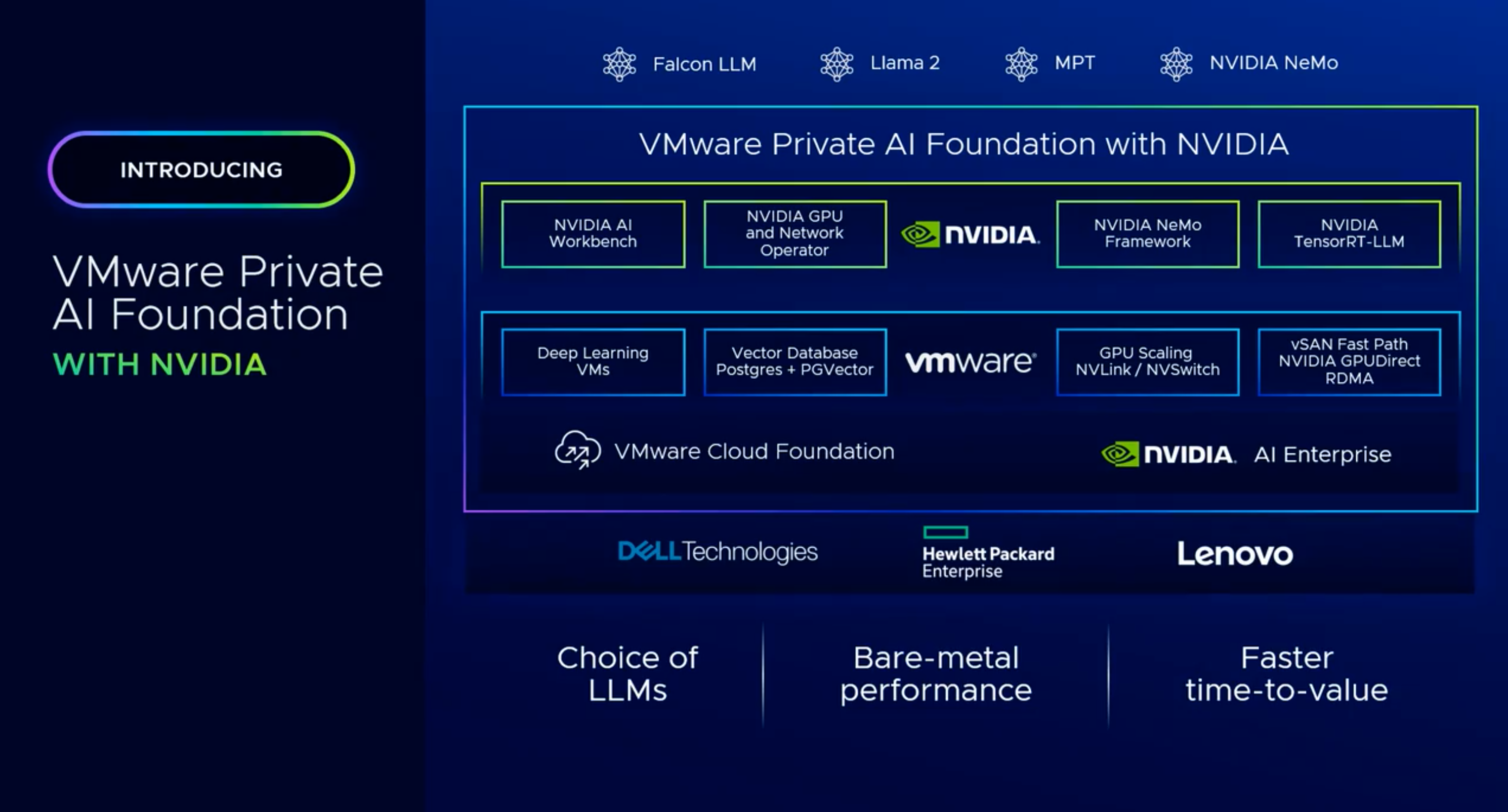



- New Innovations to Accelerate Software-Defined Edge Adoption – there were multiple announcements in this area, including new VMware Edge Cloud Orchestrator telemetry capabilities for better visibility of edge workloads. Edge operations have been simplified with the introduction of Intelligent Assist, and edge security enhanced with Microsoft Security Copilot and Symantec integrations.
Finally, here are some of the additional announcements and innovations from modern applications to anywhere workspace:
- VMware Tanzu Application Platform 1.7 GA , and VMware Tanzu Application Engine private beta, aims to enhance developer and platform engineering team experiences, and promote faster, more secure paths to production.
- VMware Tanzu Hub Integrations and Tanzu Intelligent Assist updates, along with the introduction of Tanzu Intelligence Services. VMware’s application management services have been brought together under the Tanzu Intelligence Services umbrella, including Cloud Health, Insights, Guard Rails, and Application Catalog.
- VMware Tanzu Application Service 5.0 brings into general availability features that continue to enhance the developer experience and can improve platform engineering.
- Apps on Demand is now available on Azure and AWS, with App Volumes support for persistent virtual desktops in beta. Digital Employee Experience has been enhanced with new integrations and virtual app performance scoring.
- Next-gen Mac Management and Extended Intel Chip Level Vulnerability Management were just some of the Workspace ONE updates to the Anywhere Workspace portfolio.
And breathe! If you’re still reading, and you still want more, all of the technical announcements are pulled together nicely in the What’s New at VMware Explore 2023 page, or for higher level there’s the VMware Explore 2023 Media Kit page.
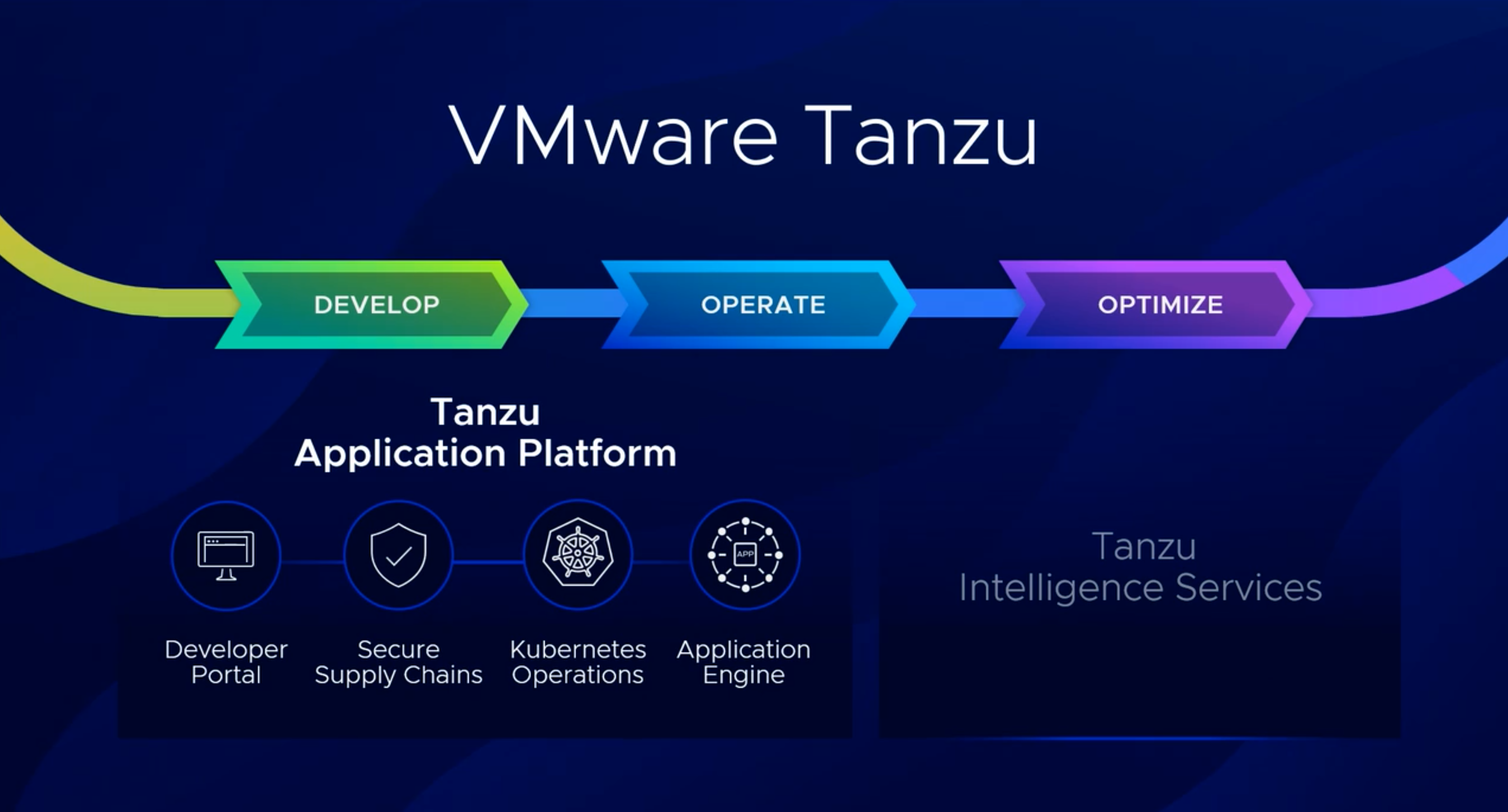

Day 1 Customer Breakout Sessions
Next, it was on to the breakout sessions starting with MAPB1443BCN, UK Health Security Agency Streamlines Cloud to Accelerate Digital Healthcare. In a really informative session from Jonny Da Silva, Head of DevOps, we listened to UKHSA’s challenges around deploying high-demand services to multi-cloud, with a need for consistent security, operational, and cost policies. UKHSA are responsible for protecting the country against health threats and share best practice and data globally. They work as an Arm’s Length Body for the Department of Health and Social Care (DHSC) alongside NHS England.
UKHSA developed new capabilities to unify governance, automate account provisioning, and build in guardrails and policies, using VMware Tanzu Cloud Health. Cloud Health was a game changer for driving down costs and optimising cloud resources, it enables UKHSA to run a multi-cloud platform where service owners and partners have the flexibility of selecting the right cloud for each application. Cloud Health provided instant visibility and substantial return on investment, through monetary savings repurposed more effectively elsewhere. Jonny spoke very well about the mantra of doing it right first time, which has delivered an award winning platform and applications. In the future, by adopting automation and AI, skills will not be replaced but instead repurposed. If you’re interested in hearing more about UKHSA’s cloud journey you can catch the session replay and separate case study.
Running at the same time as the UKHSA breakout session, was session CEIB1442BCN, Deliver Hybrid Cloud to Modernise Infrastructure and Accelerate Innovation. Fortunately I was able to catch up on the recording to hear Keith Tudge, Datacentre Manager at Chelsea and Westminster NHS Foundation Trust, deliver an excellent session on implementing a secure and resilient private cloud with VMware Cloud Foundation (VCF). VMware representatives first covered VCF use cases and the latest features in 5.0 and the newly announced 5.1. The main innovations brought in by VCF 5.1 include vSAN Express Storage Architecture (ESA), networking integration enhancements, support for DPUs with vSphere DSE (Distributed Services Engine), and support for both Terraform and Okta.
Then, and most importantly, we moved onto the customer spotlight. In 2021 Chelsea and Westminster NHS Foundation Trust were running separate VMware environments in data centres that were not fit for purpose, with no site resilience, and obsolete hardware and software. The trust migrated workloads seamlessly using HCX to a new VMware Cloud Foundation on Dell VXRail platform with dual site mirroring and resilience, software defined networking and lifecycle management. Virtual Machines were moved throughout the day with no down time and no impact to clinical services.
Fast forward to 2023 and the trust completed a rolling 24 hour upgrade to VCF 4.5, starting at 9am Monday morning as a central London organisation, again with no impact on IT systems. Infact, as a seamless background task clinicians were completely unaware the platform had been upgraded. With VCF 4.5, the team were then able to start utilising Aria Suite, particularly Operations and Lifecycle Manager. Keith gave a great example of a complete network failure at a co-located site in March 2023. The data centre network outage saw 680 VMs restarted at a second site within 7 minutes of the outage. There were no out of hours calls and barely any noticeable impact on clinical services, due to the VCF architecture.
Overall the trust has seen a huge drop in the number of P1 and P2 calls and outages, more stable clinical systems, increased confidence in IT, ease of patching to address cyber vulnerabilities, and enhanced health reporting and monitoring. A great story but not the end of the journey! Chelsea and Westminster are planning next to migrate to VCF 5, automate more with Aria Automation, centralise load balancing activities into NSX Advanced Load Balancers, further secure east-west data centre traffic with intrusion detection, and expand the platform for VDI.
Onto the next one, session CEIB1800BCN, Customer Panel: Cloud-Smart Insights from the Public Sector. Hosted by Chris Dunne, VMware Head of Regional Public Sector Technology, this panel Q&A gave us a unique insight into both operating and cloud challenges for public sector. We heard from representatives of government and higher education about evading red tape and bureaucracy, and breaking out of a traditional public sector mindset.
The panel was in agreement that software enables quicker and more efficient digital transformation, but to be successful organisations need the people, skills, and culture wrap around. Other topics included procurement, upskilling, cloud migrations, flexibility, availability, portability, and proximity of both applications and data. I was sat next to an attendee from the NHS who commented it was reassuring to hear others with the same issues he experiences day to day. This isn’t a technical session but the topics covered are absolutely crucial to the successful implementation of technical solutions, well worth a watch.
As well as the NHS speakers in today’s breakout sessions, another highlight was East London NHS Foundation Trust (ELFT) winning Hero for Good in the 2023 VMware Customer Achievement Awards. With VMware, ELFT built a future-proof platform where IT innovates, scales and maintains access to digital care services. The trust swiftly migrated to the cloud, virtualised its networks and implemented a robust disaster recovery solution. Clinical staff are now less encumbered by technology and able to engage more with patients. More people have access to ELFT’s digital care services through digital pods, and patients have easier access to view and manage their own records.

Day 2 & 3
Wednesday was another jam packed day of breakout sessions, covering not only technical content but also leadership and self-development. Some of my favourites included VCF technical deep dives, AI integration with Google Cloud VMware Engine, Azure VMware Solution migration lessons learned with Lloyds Bank, automation and Infrastructure as Code (IaC) with Natwest, VMware Cloud on AWS migration strategies for public sector customers, and an overview of AI/ML workloads running on Intel AMX CPUs. You can browse the VMware Explore 2023 Video Library for these sessions and others, using the filters for your favourite topics.
Off the back of session INDB1728BCN, When Healthcare Meets Modern AI and VMware: The Results Are Life-Changing, I had a great chat with a NHS trust about piloting the use of AI in partnership with NHS England. The NHS AI Lab is rolling out a pilot of an AI Deployment Platform (AIDP) that acts as a store for AI medical imaging technologies used in radiology workflows. Finally, the traditional Wednesday evening VMware party took place onsite with the Manic Street Preachers. Check out all the other day 2 activities in the official VMware Explore Barcelona 2023 Day 2 Recap.
Thursday, the final day of a fantastic week at VMware Explore, and still a great hustle and bustle at the Fira and across the expo hall. Apart from any left over swag, the main healthcare agenda item today is session CEIB2113BCN, Securing Medical Devices and Data with VMware NSX and VMware SD-WAN. For those with an interest in blue light services, there was also the story of an SDWAN-enabled edge compute stack for emergency vehicles in session CEIB1985BCN, Building the Police Car of the Future.
Healthcare is becoming the most common target for ransomware attacks and data breaches are rising exponentially. As the session opened we heard examples from Waldemar Potratz, VMware, including a phishing email generated ransomware attack at a hospital in Germany, and the NHS Wannacry attack, which exploited a Windows 7 vulnerability in 2017.
Although banking and financial personal data may be the obvious target for cyber criminals, we learnt that actually your medical information is worth between 10 and 40 times that of your credit card number on the black market. Furthermore, AI is now being used to manipulate medical images, and medical devices are being targeted as a back door entry to a hospitals network and systems. Often the communication path for medical devices is unsecured, using protocols such as HTTP, and configuration changes can result in voiding the devices warranty or support status.
We heard how technologies like NSX micro-segmentation, IDPS, and NDR, identify application boundaries and implement a zero trust model over the top of the existing underlay network. NSX Advanced Load Balancer (ALB) and Web Application Firewall (WAF) is used to protect web applications and API’s, while SDWAN provides secure connectivity across sites and cloud applications.
You can find more NHS specific guidance on this topic in the NHS Micro-Segmentation Solution Brief which covers architectures for datacentre and connected medical devices.
Check out the official VMware Explore 2023 Barcelona Day 3 Recap for the full scoop featuring more innovative sessions, Hands-on-Labs, and live podcasts. And that’s a wrap, but save the date! VMware Explore 2024 Barcelona has been confirmed for 4-7 November, at Fira Gran Via.
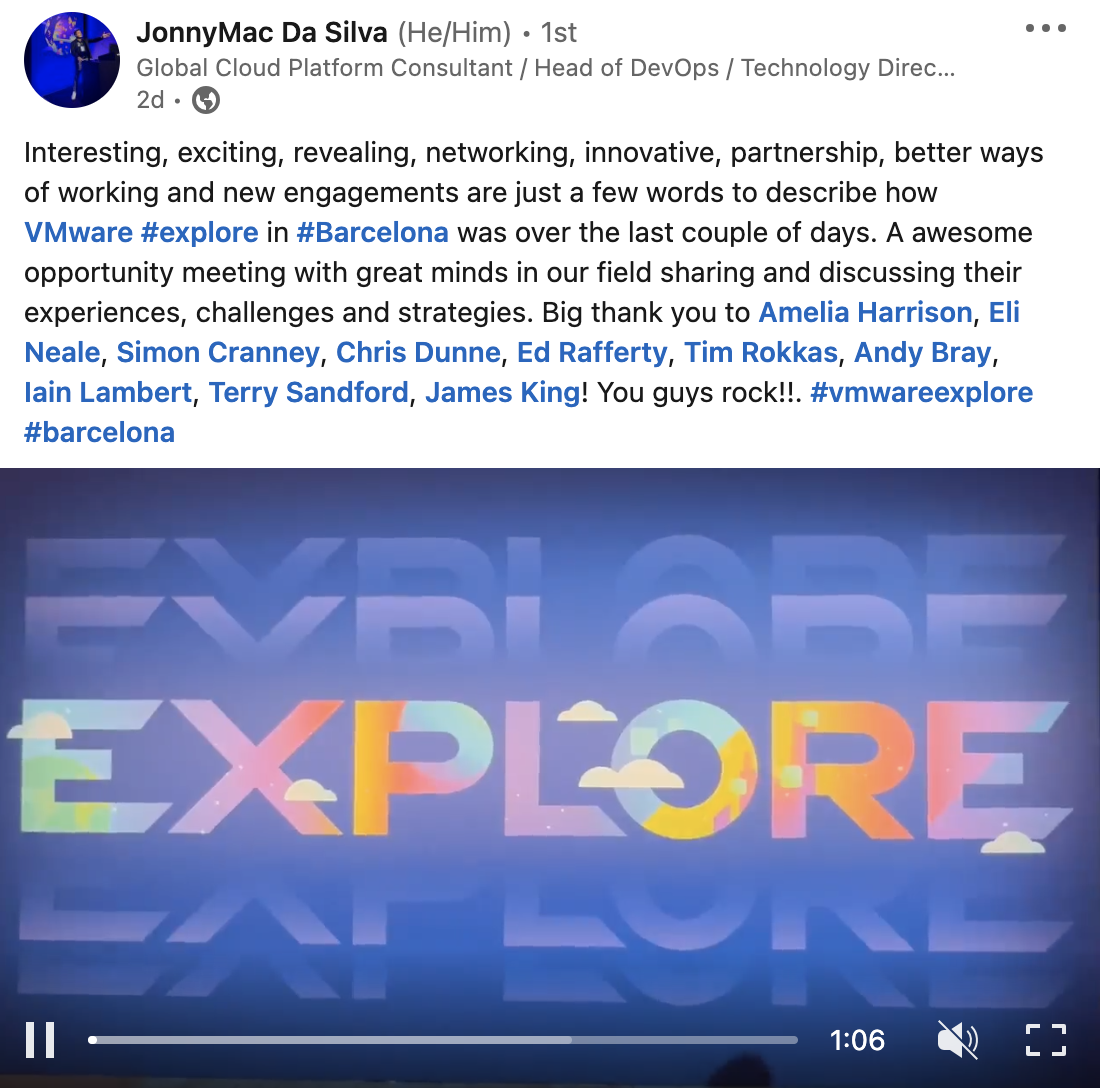
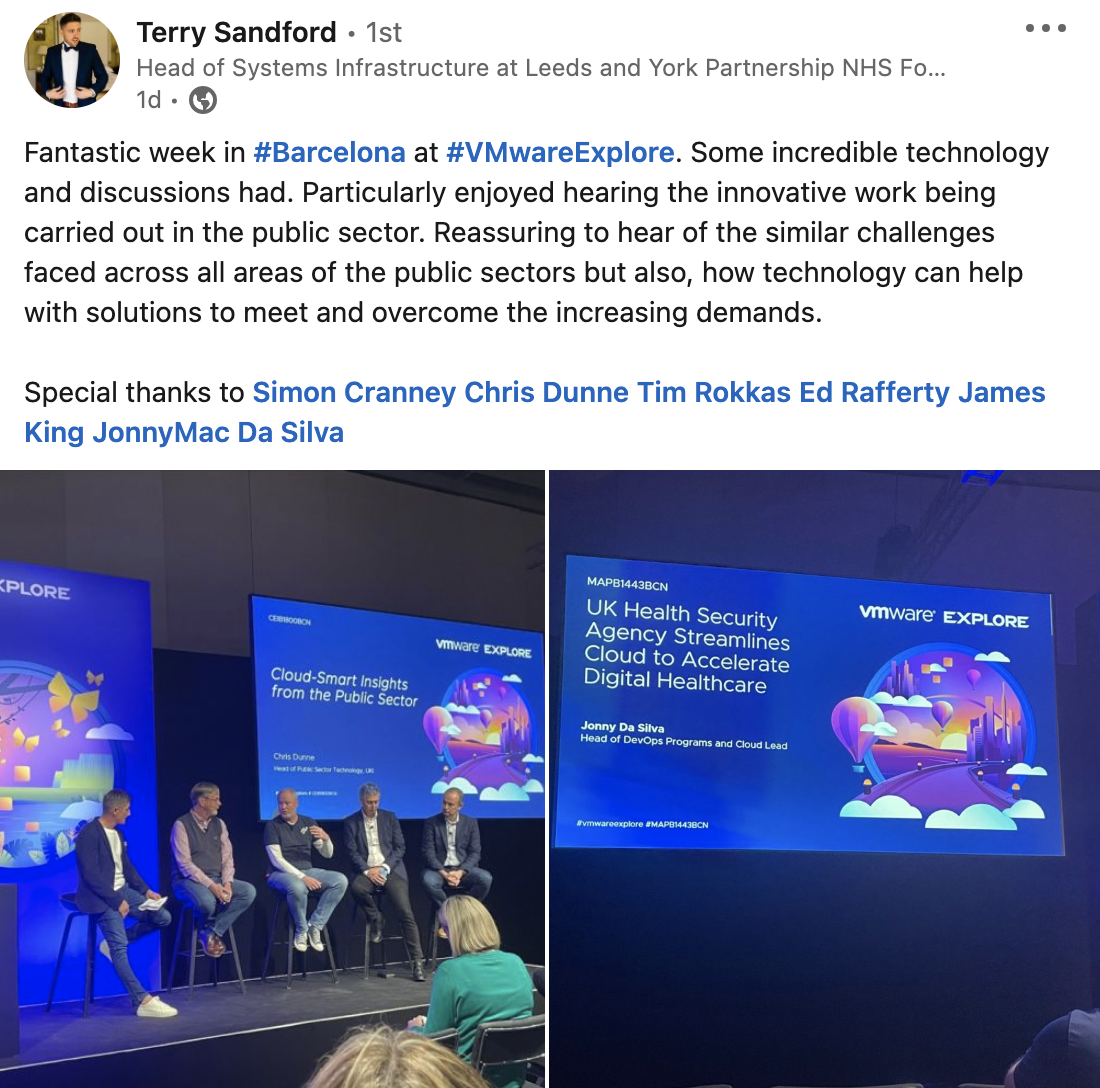

Good read, thanks Simon!
LikeLiked by 1 person
Thanks Simon, this post really took the edge off
LikeLike